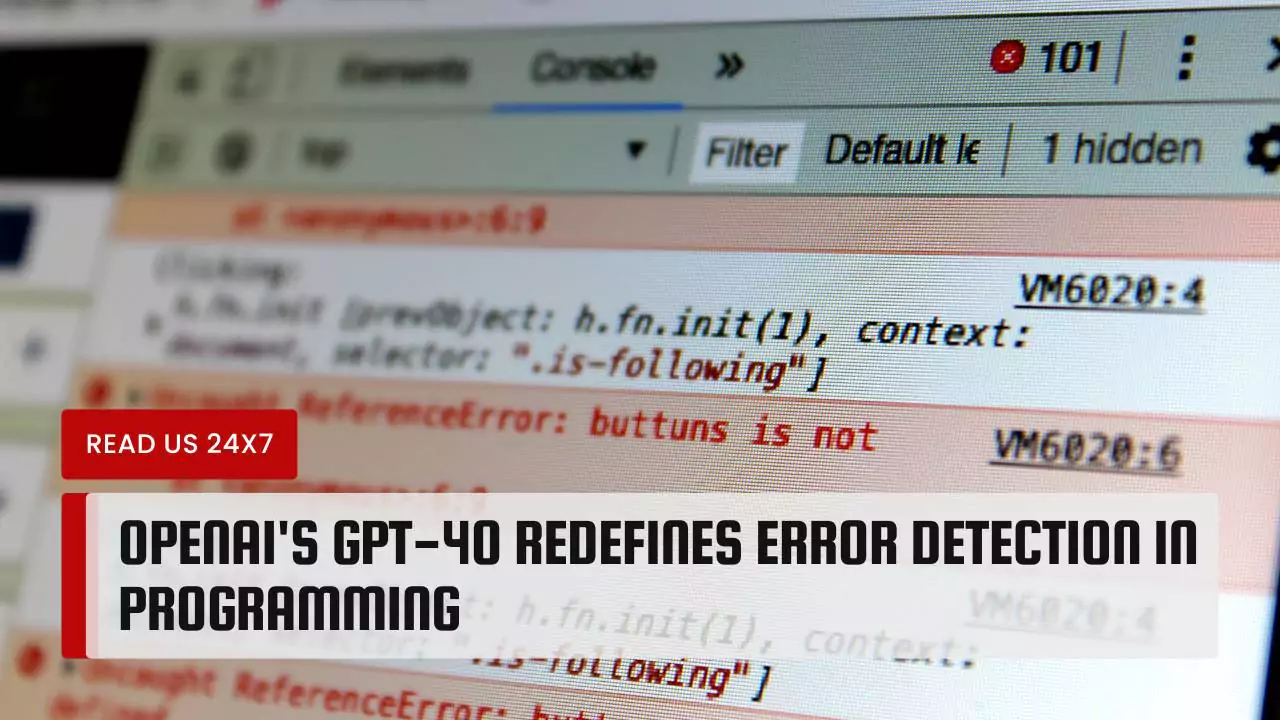OpenAI’s latest innovation, the GPT-4o model, has caused quite a stir in the tech world, especially among programmers and developers. With its remarkable ability to detect errors in code, GPT-4o is reshaping the landscape of programming as we know it. Let’s delve deeper into what makes this model so groundbreaking and its implications for the future of coding.
What is GPT-4o?
GPT-4o stands as OpenAI’s flagship multimodal AI model, capable of reasoning across text, audio, and images in real time. Building upon the success of its predecessor, GPT-4, this new iteration offers enhanced performance and versatility. With its ability to process various data types seamlessly, GPT-4o represents a significant advancement in AI technology.
Benefits of GPT-4o for Coders
One of the standout features of GPT-4o is its proficiency in detecting errors in code. Through its sophisticated algorithms, the model can identify and flag potential mistakes swiftly and accurately. This capability not only streamlines the debugging process but also helps improve code quality and reliability.
Moreover, GPT-4o can serve as a valuable assistant for coders, offering suggestions and insights to optimize their programming tasks. By leveraging the model’s capabilities, developers can enhance their productivity and efficiency in software development projects.
Additionally, GPT-4o has the potential to reduce human error in coding. With its meticulous error detection mechanisms, the model acts as a reliable checkpoint, minimizing the risk of overlooking critical issues during the development process.
How GPT-4o is Changing the Future of Coding?
The advent of GPT-4o heralds a significant shift in the way we perceive coding and its role in the digital landscape. As AI technologies continue to advance, the traditional notions of programming are evolving rapidly.
One of the most pressing implications of GPT-4o’s capabilities is its potential impact on job dynamics within the tech industry. With the model’s proficiency in code error detection, there is speculation about the automation of certain coding tasks, leading to concerns about job displacement among programmers.
However, amid these concerns, there is also a recognition of the importance of upskilling in AI for job security. As AI technologies become increasingly integral to various industries, acquiring expertise in AI development and implementation can safeguard against potential job loss and ensure relevance in the evolving job market.
In this context, GPT-4o plays a crucial role in driving innovation and progress in AI development. By empowering developers with advanced tools and capabilities, the model catalyzes the growth of AI-driven solutions and applications across diverse domains.
In conclusion, OpenAI’s GPT-4o represents a paradigm shift in error detection and programming. With its groundbreaking capabilities and potential implications for the future of coding, the model is poised to redefine the way we approach software development and AI integration. As we embrace this new era of technological innovation, the role of GPT-4o in shaping the future of coding cannot be understated.



